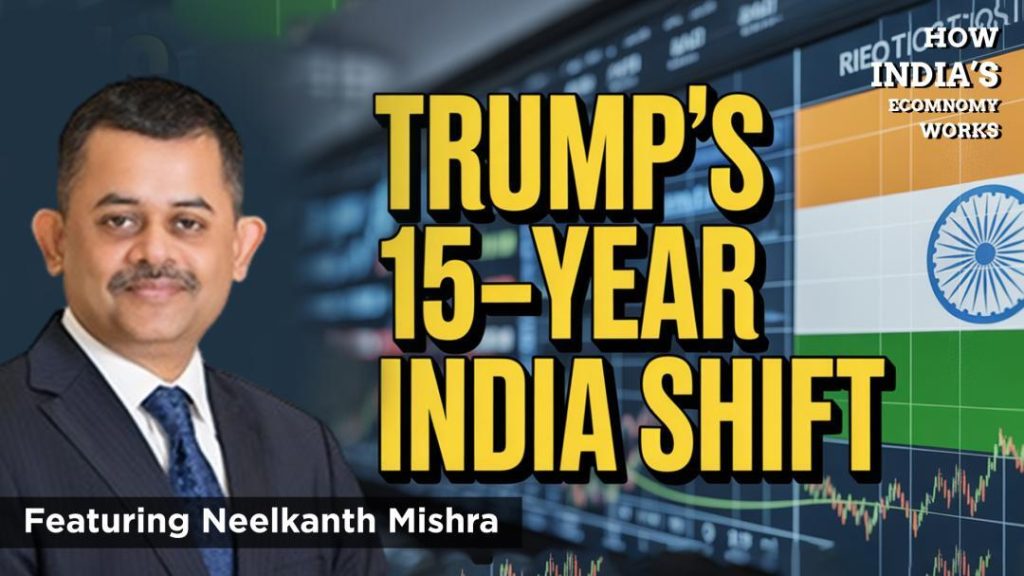
Trump-Era Policies Could Shape India’s Economy for Years
The world is still reeling from the aftermath of the Trump era, which saw the introduction of unprecedented trade policies that sent shockwaves across the globe. While the US has a significant impact on the global economy, India, in particular, may face long-term economic implications from these policies. In this blog post, we’ll explore how the Trump era’s policies could shape India’s economy for years to come.
One of the most significant consequences of the Trump era’s policies is the shift in global currency dynamics. The post-Bretton Woods era, which began in the 1970s, saw the US dollar become the dominant global currency. However, with the rise of emerging markets and the increasing importance of other currencies, such as the euro and the Chinese yuan, the US dollar’s dominance is waning.
This shift has significant implications for India, which relies heavily on foreign capital to finance its trade deficit. The country’s balance of payments (BoP) is currently stable, thanks to a surge in foreign capital inflows in recent years. However, sustained growth will require careful currency management, access to foreign capital, and structural reforms in key sectors such as agriculture, entrepreneurship, and technology.
India’s economy has shown remarkable resilience in the face of global headwinds, with GDP growth rate remaining strong at around 7%. However, the country’s dependence on foreign capital to finance its trade deficit and its vulnerability to global currency fluctuations make it vulnerable to economic shocks.
The current account deficit, which measures the difference between a country’s imports and exports, has been widening in recent years, driven by a surge in imports and a decline in exports. While the deficit is still manageable, it could become a significant concern if not addressed.
To mitigate the risks associated with global currency fluctuations, India needs to adopt a more proactive approach to managing its currency. This could include allowing the rupee to appreciate against other major currencies, such as the US dollar, to reduce the trade deficit and make exports more competitive.
Another area of concern is the country’s dependence on foreign capital. India’s financial markets are heavily reliant on foreign portfolio investors (FPIs), which account for around 20% of the country’s equity market capitalization. However, FPIs are known for their volatility, and a sudden withdrawal of funds could have significant implications for India’s financial markets.
To reduce its dependence on foreign capital, India needs to focus on stimulating domestic savings and investment. This could be achieved through a combination of monetary and fiscal policy measures, such as lowering interest rates and increasing government spending on infrastructure projects.
Structural reforms are also critical to driving sustainable growth in India. The country’s agriculture sector, which accounts for around 15% of its GDP, is in dire need of modernization. The sector is plagued by inefficiencies, including inadequate irrigation systems, poor crop yields, and limited access to markets.
To address these challenges, the Indian government needs to introduce policies that promote sustainable agriculture practices, such as organic farming and precision irrigation. Additionally, the government should focus on developing a robust agricultural value chain that connects farmers to markets and provides them with better prices for their produce.
Another area of focus should be entrepreneurship and technology. India has a thriving startup ecosystem, but it needs to be supported by a more robust infrastructure and policy framework. This could include initiatives to promote innovation, such as tax breaks and research funding, as well as measures to improve the ease of doing business, such as simplifying regulatory procedures and reducing bureaucracy.
Finally, India needs to address the growing threat of global protectionism. The Trump era’s trade policies, including the imposition of tariffs on imports from countries like China and India, have created a global trade war that is having significant implications for the global economy.
To address this challenge, India needs to focus on diversifying its trade relationships and promoting bilateral trade agreements with other countries. This could include agreements with countries like the UK, Australia, and Canada, which share similar values and economic systems with India.
In conclusion, the Trump era’s policies have significant implications for India’s economy, including the potential for long-term economic impacts from global currency shifts reminiscent of post-Bretton Woods devaluations. To mitigate these risks, India needs to adopt a more proactive approach to managing its currency, reduce its dependence on foreign capital, and implement structural reforms in key sectors such as agriculture, entrepreneurship, and technology.
By doing so, India can ensure sustained growth and become a more resilient and competitive economy in the years to come.
Source: https://youtu.be/C20auPamhKU






